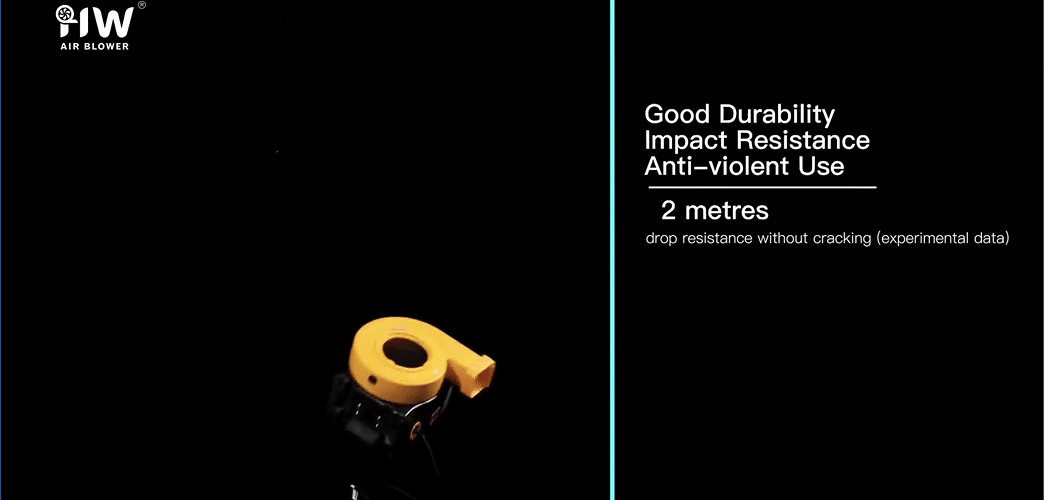
The Complete Guide to Safe Blower Use for Busy Event Days
For event rental businesses, ensuring safe and reliable blower operation is essential, especially on busy days with multiple setups and high client expectations. Proper blower handling and setup techniques help maintain a safe environment for guests while protecting your equipment from damage. Here’s a comprehensive guide to safe blower use during high-demand event days.
1. Choose the Right Blower for Each Inflatable
Select a blower model that matches the size and type of inflatable you’re using. Large inflatables require powerful blowers with high airflow capacity, while smaller structures may only need compact, energy-efficient models. Using the right blower ensures steady inflation and minimizes the risk of overheating or underinflation during the event.
2. Inspect the Blower Before Use
Before each event, perform a quick inspection of the blower to check for visible damage, wear on the power cord, and secure fastenings. Clear the air intake and outlet of any debris, dust, or obstructions that could restrict airflow. Regular pre-event inspections help prevent potential issues and ensure that each blower is operating at peak performance.
3. Set Up on Stable, Dry Ground
Place the blower on a flat, stable surface away from wet or uneven ground. This not only provides a safe foundation but also prevents the blower from tipping or slipping during operation. If the ground is wet, consider using a tarp or mat under the blower to keep it clean and stable, especially if the event involves outdoor setups.
4. Use Dedicated Power Sources
To ensure safe and consistent power, plug each blower into a dedicated power outlet. Avoid overloading circuits by running multiple blowers on the same outlet. If an extension cord is needed, choose a heavy-duty, outdoor-rated cord that can handle the blower’s power requirements. For added safety, connect the blower to a Ground Fault Circuit Interrupter (GFCI) outlet to prevent electrical hazards.
5. Securely Attach the Blower to the Inflatable
Ensure the blower’s nozzle is securely connected to the inflatable’s air intake. Use straps or ties to fasten the intake sleeve around the blower nozzle tightly, minimizing air leaks and maintaining strong, consistent airflow. A secure connection helps the inflatable stay stable throughout the event, even in high-traffic situations.
6. Monitor Blower Temperature and Airflow
Throughout the event, periodically check the blower’s temperature and airflow to ensure safe operation. Many blowers, including Huawei models, are equipped with temperature regulation and automatic shutoff features to prevent overheating. Regular monitoring helps identify potential issues early, so you can address them before they affect the inflatable’s stability.
7. Position Blowers Away from High-Traffic Areas
Place blowers in low-traffic zones, ideally behind the inflatable, where they are less accessible to guests. This positioning minimizes tripping hazards and keeps the blower safe from accidental interference. If using multiple blowers, create a designated safety area to prevent guests from getting too close to the equipment.
8. Use Noise Reduction Methods for Guest Comfort
If noise is a concern, especially at indoor events or quieter gatherings, consider placing noise-reducing barriers around the blower or choosing a low-noise model. Sound barriers, such as foam panels or acoustic blankets, can help muffle noise and make the event more enjoyable for guests without affecting blower performance.
9. Allow Blowers to Cool During Long Events
For long-duration events, consider giving blowers brief cool-down periods during lower-traffic times. Turn off the blower for 5-10 minutes to allow the motor to cool down, which can help extend its lifespan. This is especially useful during high-demand seasons when equipment is in frequent use.
10. Inspect and Clean Blowers After Each Event
Once the event ends, inspect the blower for any visible wear or debris, clean the air intake and outlet, and check the power cord for signs of damage. Routine post-event maintenance ensures that each blower is ready for its next use, reducing downtime and enhancing equipment reliability.
Conclusion: Reliable Blower Use for Safe and Successful Events
Following these steps for safe blower use helps maintain consistent performance, protect your equipment, and create a secure environment for guests. By choosing the right blower, monitoring setup, and performing routine maintenance, you ensure reliable service at each event, keeping clients and attendees satisfied.
Implement these safe blower practices to get the most from your Huawei air blowers and deliver dependable, quality service during busy event days.